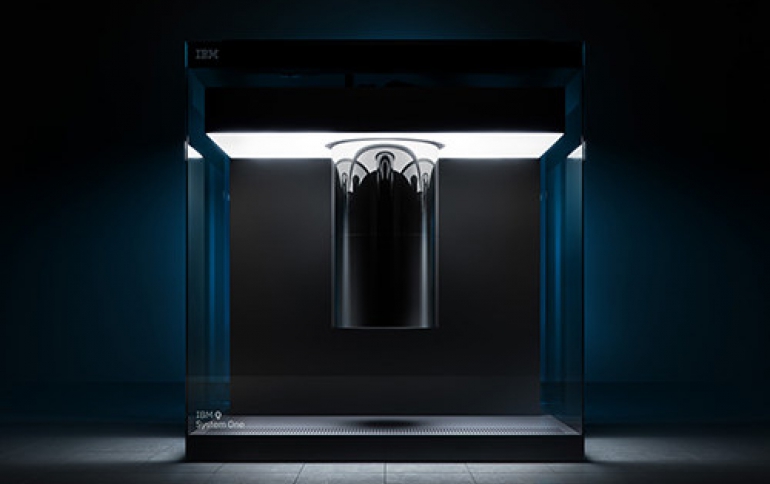
IBM Takes Its Quantum Computer to Japan
IBM quantum computing hardware comes to Japan thanks to the Japan-IBM Quantum Partnership, a new initiative led by IBM and the University of Tokyo.
The partnership follows a similar one in Germany, announced in September 2019. Both deals see IBM’s recently released commercial quantum computer IBM Q System One installed locally, bringing the number of installations worldwide to three.
The German agreement is with the Fraunhofer-Gesellschaft, an applied research institute headquartered in Munich, and the goal is to work together on advancing quantum computing research and applications. While IBM is bringing its quantum computer to Germany, the German government, for its part, pledged to inject 650 million euros ($717 million) over two years in broader research in the field.
The aim in Japan is three-fold: to get universities across Japan to take part in accelerating quantum computing research and education; to engage industry and advance practical research in applications; and to develop and commercialize quantum computing system hardware components for building future quantum machines.
IBM already has a head-start in Japan with a hub at Keio University in Tokyo launched in 2017, which is collaborating with four industry partners in the country: MUFG Bank, Mizuho Financial Group, JSR Corporation and Mitsubishi Chemical Company. Together with Keio, these industry partners have pursued and published work on applying quantum computing to understand the complex processes in Lithitum ion batteries, discover new materials for making semiconductor chips, improve the accuracy of risk analysis in finance, and improve the efficacy of machine learning for a broad set of use cases across industries.
The new deal will bring the hub into the broader Japan-IBM Quantum Partnership framework as more companies join, spanning finance, chemistry and materials, pharma, automotive manufacturing and logistics. The idea is to prepare the market, to enable industry partners in Japan to take advantage of the benefits of quantum computing as the technology matures.
But that’s only one component of the deal. Another one is to set up a technology center at the University of Tokyo to develop quantum computing system hardware for next-generation quantum computers, with a lab to test advanced components and equipment in cryogenic conditions – cooling it to temperatures lower than in outer space.
Finally, the third aspect of the collaboration is to advance quantum computing research and to get more young people interested in pursuing a career in the field. Universities across Japan will have access to the IBM Q System One machine – a unique resource that should help foster a broader future workforce.
Typically, prototype quantum computers have to sit in a specialized lab. They look nothing like a traditional computer and resemble more a golden chandelier tucked inside a cannister the size of an average barrel. These computers work with qubits instead of bits and rely on probabilities rather than certainties. Any external noise can yank qubits out of their quantum realm, so a quantum computer has to be cooled down to extremely low temperatures, colder than outer space – hence the elaborate, delicate setup in a lab.
But IBM Q System One is different. Unveiled in January at the 2019 CES event in Las Vegas, this 20-qubit system is a stand-alone, fully integrated machine that combines quantum and classical parts. It’s designed to be used both for research and business applications. At nine feet tall and nine feet wide, the system is still the size of a large wardrobe, but it has all a company would require for quantum computing tests, including cryogenics.
A few weeks ago IBM hosted its 3rd Qiskit Camp in Hokuto, Yamanashi of Japan where 120 developers and students participated in a four-day education program, which included a competitive hackathon where they build apps and games using real quantum hardware.
Its users are part of the IBM Q Network, a community of Fortune 500 companies, academic institutions, research labs and startups. They collaborate with IBM using IBM Q Experience, the online platform that gives users access to the company’s quantum computers via the cloud, to advance quantum computing and explore its commercial applications. And they also have access to Qiskit, an open-source quantum computing software development framework.
Currently, there are over 200,000 registered users of the IBM Q Experience, and since its launch in May 2016, its users have run over 140 billion executions and published more than 200 scientific papers. But Germany and now Japan will benefit from having direct access to a dedicated quantum computer – not just to systems that are shared among many users worldwide on the cloud. This will provide more capacity, capability, and opportunity for a much larger number and variety of users to work with cutting-edge quantum systems in these countries, with support from IBM, to develop applications of the technology.
IBM Q System One, just like any other existing quantum computer, hasn’t yet reached quantum advantage – meaning it can’t yet outperform a traditional computer. Still, it has already produced a quantum volume of 16, which reflects some of the lowest error rates IBM has ever measured. Quantum volume is an IBM-developed measurement growing in popularity in the external technical community that determines how powerful a quantum computer is.





















